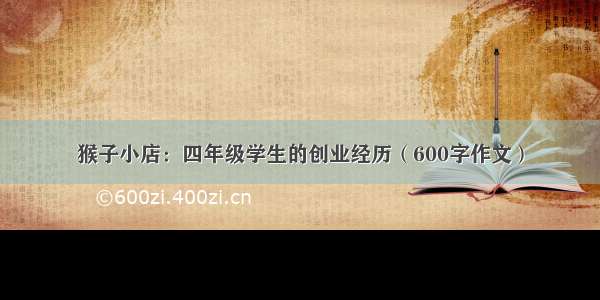
(-03-02)
玺印文字的独立性与稳定性
Independence and Stability of Seal Characters
以文字为主要表义方式,印信文字系统相对独立,演变缓慢,以保持社会持续认同,这是中国玺印的又一显著特点。
Another obvious characteristic of seals is that the characters were always the major means of signification, the script remaining relatively independent of forms, evolving only slowly and thereby retaining the continuous recognition of society.
中国玺印的文字体系,包含字体与书体两部分。在先秦两汉时代,玺印文字逐渐形成一种专门化的风格形态,这与官方制度的约定有关。《汉书·艺文志》记载,汉初太史官用来考试学童的“六体”书中,有专为“摹印”一种。在东汉许慎《说文解字·叙》中所记“秦书八体”和新莽的“六书”中,都有“五曰摹印”或“五曰缪篆,所以摹印也”一体。“摹印”与“缪篆”实为一事。这种官方约定形成了长期的历史惯性,导致其后2000多年印章发展过程中,篆体文字始终是印文的基本形态。其间汉字的社会应用经历由篆而隶,由隶而草、而楷的演化,在晋代以后逐步稳定下来。但印章文字并未因社会应用字体的变化而同步改变。这固然与封建国家制度和文化传统的长期延续有关,同时也因为玺印在中国社会中承载了丰富的政治、经济、人文元素,需要以稳定的形式强化它作为郑重信物的社会认同。
The textual content of seals comprises two elements, namely: character form (字体) and script style (书体). Over the pre-Qin and Han dynasty period, the characters on seals gradually evolved into a special stylistic form, becoming a script subject to the provisions of governmental systems. For instance, in the early Han Dynasty, in the examination used by the Office of the Grand Historian to test students among the “six scripts”(六体书)was one known as mo seal script (摹印章). Government regulations resulted in a long-lasting historical custom, so that zhuan seal script (篆体) remained the basic script for Chinese seal characters for over two millennia. During this period, the Chinese characters also saw the evolution of different calligraphic styles; from zhuan to li (隶,clerical script)to cao(草,cursive script)and then to kai(楷,standardscript ), the process gradually petering out only after the Jin Dynasty. Yet the scripts inscribed on seals did not change in line with changes in calligraphic styles in society as a whole. This, of course, had to do with the long perpetuation of a unitary feudal state system and cultural tradition. Besides, since seals carried a wealth of political, economic and cultural implications in Chinese society, they needed a stable form so that society would better recognize them as an important means of authentication.
日利
在中国印史上,篆体汉字形态在印章中的演变,首先表现为缓慢的自然蜕变。受到文字“隶变”的影响,小篆和缪篆之规正体态逐步走向草率。
In the history of Chinese seals, the evolution of zhuan script on seals started with natural development of seal characters. Influenced by the evolution of Chinese writing toward the li script, the appearance on seals of xiao zhuan(小篆) script and mou zhuan (缪篆)script gradually developed into cursive styles.
其次是制度性的变动。由隋唐奠定新制,重建小篆印文新体,经南宋形成“九叠篆”,其后逐渐茂密,至明清又渐为孳乳,形成多种杂篆名目,并赋予表示官印等级的意义。
The second cause of this evolution was the change in the seal system. A new system was established in the Sui and Tang dynasties. New seal scripts were also developed. After the Southern Song Dynasty (1127-1279) the “nine-fold zhuan style”(九叠篆) was created, followed by more and more styles. By the Ming and Qing dynasties, a variety of zhuan styles had been established. These styles also indicated the rankings of official seal.
右马厩将
再次是出于美化意识的变体。艺术化是中国书法从先秦时代即出现的一种趋势,这一努力持续存在于书法与印章文字的领域。但汉代流行的鸟虫书与魏晋时期的悬针篆,则是在小篆的基础上以构造新体的形式来增加文字的装饰性,后世出现的多种变体篆书亦属于此类。这是印文书法艺术化的另一种形式,并非主流现象。
Another reason was stylistic variations developed for esthetic reasons. Early in the pre-Qin period, a trend towards emphasizing the artistic nature of Chinese characters emerged in the area of calligraphy; this trend advanced persistently into the areas of calligraphy and seal engraving. The “bird-and-insect” zhuan style popular in the Han Dynasty and the “suspended- needle” zhuan style popular in the Wei and Jin dynasty by creating new style variations on the basis of xiao zhuan, enhanced the decorative function of the characters. Many variations of zhuan style developed in later periods were driven by the same intention. This was another form of calligraphic artistry in seal text inscription but was not the mainstream phenomenon.
此外,辽、西夏、金、元诸少数名族政权建立时,其文字也多仿照汉字篆体用于印章,成为玺印文字中的新族。
Moreover, when non-Han regimes such as the Liao (907-1125), Western Xia (1038-1227), Jin and Yuan dynasties were established, words from their written languages were used on seals in styles resembling the zhuan style of Chinese characters. These languages became new members of the seal calligraphy family.
谨封
印文字体与书体的演化和变动,根本上来说都与一定的时代相联系。因此,这是鉴别中国古玺印时代的一个标尺。官印文字与私印文字体态的演化在隋唐以后呈现二元发展的状况,即官印在制度的约定下,不断趋向严密的程式;民间用印则出现自由清新的多样化字体风格,形成与秦汉时代不同的发展特点。
Essentially, evolution and change in the character forms and script styles are both related to particular historical periods. They are also chronological demarcation criteria in the history of ancient Chinese seals. After the Sui and Tang dynasties, the styles of characters on official and private seals evolved along divergent paths: with official seals, the form became increasingly strict under the prescriptions of various systems; on the other hand, the seals used by ordinary people developed free, novel and diverse calligraphic styles. This was in marked contrast to development trends in the Qin and Han dynasties.
本文节选自孙慰祖:《中国印章-历史与艺术》,外文出版社,。
Sun Weizu: The History and Art of Chinese Seals, Foreign Languages Press,
责任编辑:戴梦岚
















